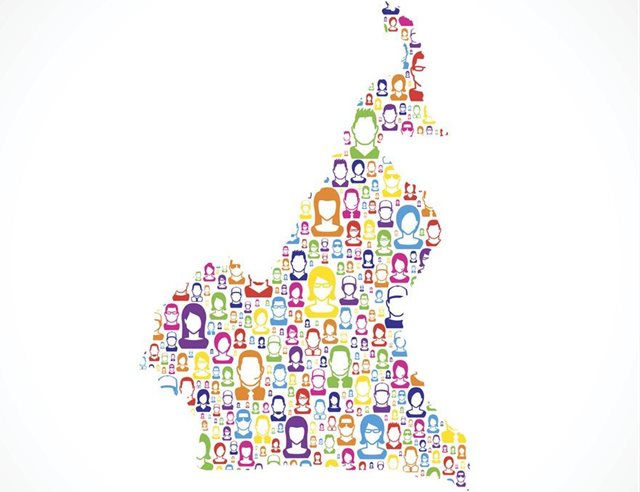How Twitter has been used in Cameroon's Anglophone crisis

Since then, what began as nonviolent protest has grown into a conflict that threatens to become a civil war. Given this unfolding situation, we examined how various groups – including the government, Anglophone activists, media organisations and citizens – used social media to report on events.
Cameroon has a history of suppression and control over the media. The government only allowed independent mass media to operate from the 1990s and most media was state-owned. In this context, social media could provide the opportunity to expand coverage of certain issues in a way that wasn’t possible before and in turn influence policy and perceptions.
We found that social media use has loosened the grip of governmental control of media messaging and expanded the public narratives available. Yet, at the time of writing, these changes did not seem to have lessened the impact of the crisis.
While it appeared that social media was having an influence on the situation, there was little analysis on trends and patterns which could show whether it was stemming violence or supporting peace. We wanted to look more closely at these issues, particularly to identify potential entry points for conflict resolution and peace building.
Key findings
Our main focus was on information publicly available on Twitter, though we also read posts from other social media platforms like WhatsApp, Facebook, and YouTube. We manually retrieved tweets about the crisis that were made between September 2016 and December 2018. Only tweets in English were used to capture the reporting of the crisis by those who were most affected. The top three hashtags used were #BringBackOurInternet, #FreeAllArrested and #Ambazonia.
We analysed the tweets to see what people were reporting about. We wanted to see how:
- People viewed the cause of the crisis. Different interpretations of the colonial and post-colonial history of Cameroon were discussed to show that the marginalisation that Anglophones feel has a long history.
- People named the crisis. Various tweets and other social media posts used terms like ‘Anglophone problem’, ‘Anglophone crisis’, ‘ghost towns’, ‘strike’ and ‘genocide’.
- Groups used it to try to attract the government’s attention in a bid to start negotiations.
- Violence was reported. There were many tweets about the ongoing killings, human rights abuses, escalating violence, burning of people’s homes by government forces and of schools by armed activists. Tweets also highlighted the increasing numbers of internally displaced people and refugees in neighbouring countries.
- Options for resolution were put forward. These included: decentralisation – which appears to be the government’s preferred option; federalism – preferred by some Anglophones; and the formation of Ambazonia (a separate state), which was preferred by others.
- Social inclusion and disability were covered. A number of tweets reported how the crisis was affecting vulnerable groups – like women, children, and people with disabilities. For instance, there were reports that people with disabilities died because they couldn’t flee violence and reports of people developing disabilities due to injury.
- The government responded. The government used social media to inform the public, report on the arrest and extradition of some Anglophone leaders from Nigeria to Cameroon.
- When the government shut down the internet in English-speaking regions, tweets captured this blackout. Some posts captured government crackdown – like YouTube posts showing the military burning down people’s houses. Discussions on social media alleged that the military might’ve been responsible for images of their actions being spread. Consequently, the government banned military use of mobile phones on duty.
- People viewed global and international responses. There was frustration and anger that the UN and foreign governments had been silent while violence escalated. Some foreign governments, like the US, eventually did and condemned the Cameroon government and armed separatists.
- Social media was used to fund raise and highlight deal-making. Anglophone activists tried to raise money to keep their independence movement going, while a British company was heavily criticised for making business deals with the Cameroon government while the crisis happened.
- The economic impact was covered. Tweets reported how technology start-ups in the English regions were shut-down with some moving to the French regions. Others mentioned how workers lost their jobs and big corporations – like the Cameroon Development Corporation– were slowing operations due to attacks.
What this all means
While it is evident that citizens use social media to participate in political discussions in new ways, we still do not have a clear picture of how social media is influencing the current crisis. In many instances, it appears to be amplifying violence, creating a culture of impunity when perpetrators are not held accountable, and increasing insecurity and suspicion.
The actual impacts of activists’ and citizens’ attempts to garner international attention using Twitter – when they shared horrific images of killings and destruction – did not get the results they hoped for. And these attempts to increase awareness did not appear to reduce the violence, at least during the time of our study.
However, there is growing international awareness with recent reports about human rights abuses and how the Cameroon crisis is one of the most neglected.
Finally, while there were posts about peace, we did not see a strong peace building social movement. We are now hearing that it can be risky to even talk about peace, privately or publicly. Yet there are several recent examples of people who are taking that risk using social media for peace building purposes.
For now, social media is most effectively used to highlight violence, documenting the impacts of displacement, social exclusion, and disability, and for garnering global and international responses. It’s less effective for gaining traction on mechanisms for resolution or Cameroon’s future. Hashtags alone won’t stop the violence – but they are one action that everyday people are using to try and do so.